Don’t stress the calorie count—it’s Thanksgiving
This is one day of the year when you can mostly throw caution to the wind. If you’re worried about your health, diet, and weight, the other 364 days play a much bigger role than Thanksgiving. But if you want to avoid the worst of the excesses, favor foods from the top half of this list, and eat sparingly of the foods toward the bottom. And most importantly: Enjoy the day, the company, and your feelings of gratitude (they’re good for you).
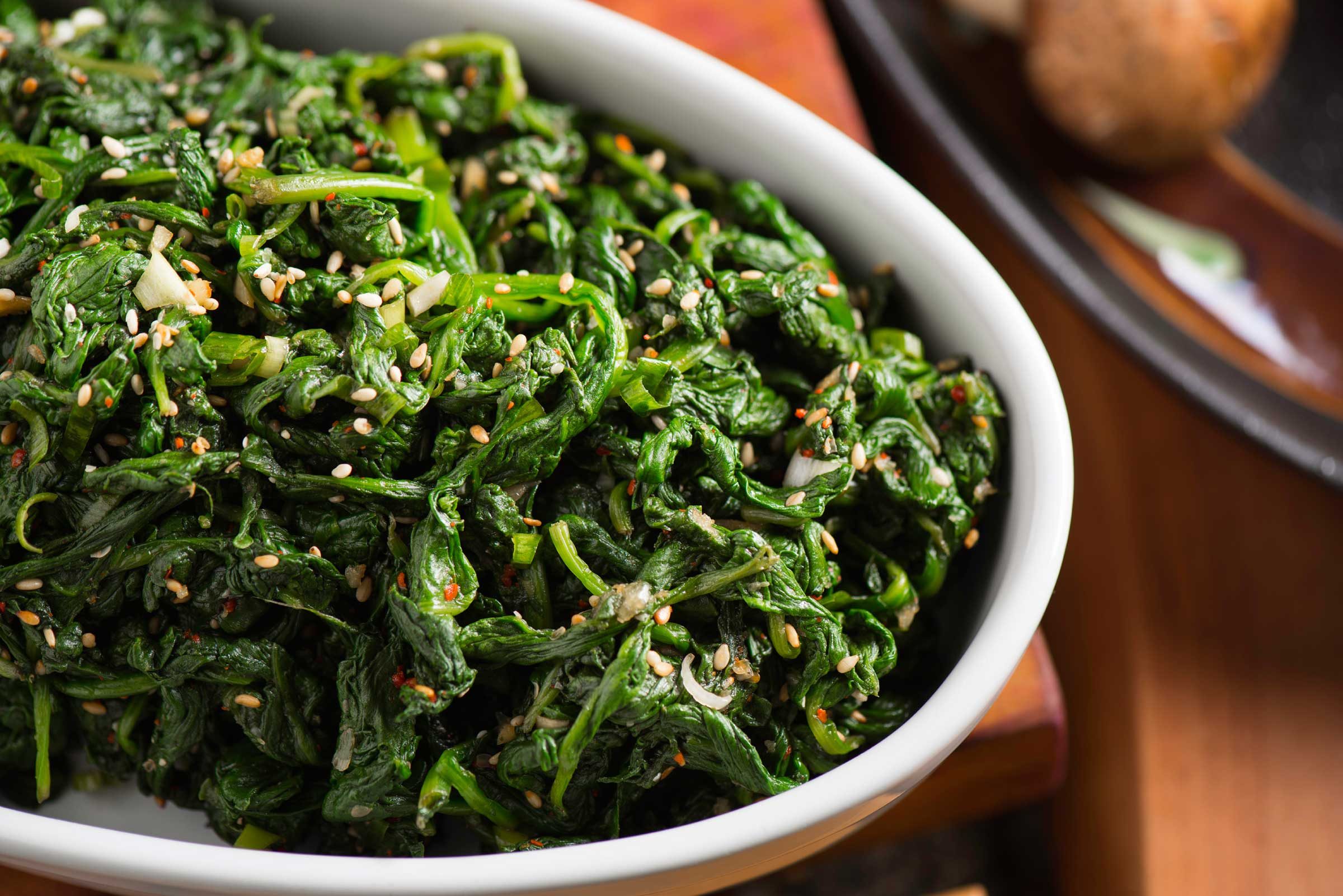
Cooked spinach
The pros: A generous portion keeps your appetite under control for far fewer calories (20 per cup) and more micronutrients than other Thanksgiving foods like, say, a biscuit. Each cup provides satiating fiber. Need more reasons to eat more spinach right now? Your body absorbs vitamins A and E, fiber, calcium, iron, zinc, and valuable carotenoids such as beta-carotene (important for eye health) when you eat spinach either cooked or raw.
The cons: The spinach could have hidden calories, depending on how it’s prepared. A quarter cup of crumbled feta, for example, can add upwards of 100 calories. A balsamic vinegar topping, on the other hand, has only 14 calories per tablespoon. (Here’s the best way to recover from a Thanksgiving binge.)
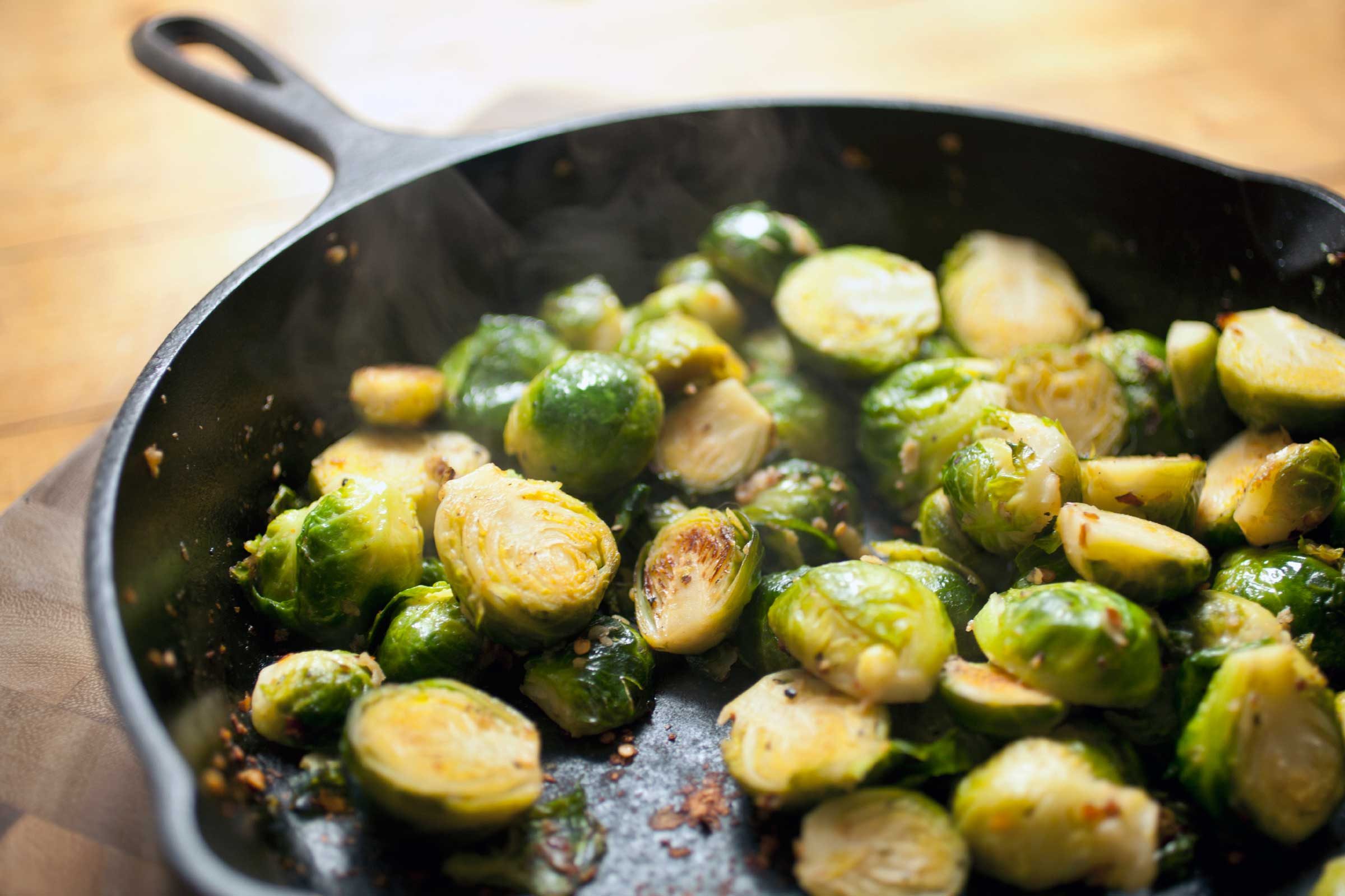
Brussels sprouts
The pros: Like spinach, Brussels sprouts offer satisfying fiber, which fills you up, and a decent amount of protein (3 grams in 3/4 cup). Plus, 3/4 cup of Brussels sprouts provides more than 100 percent of vitamin K and 60 percent of vitamin C needs for the day for just 34 calories.
The cons: They’re not always a crowd-pleaser, as far as Thanksgiving foods go. People who dislike Brussels sprouts have a certain version of a taste receptor gene, which binds strongly to bitter compounds. This makes some people more sensitive to the veggies’ bitter flavor.
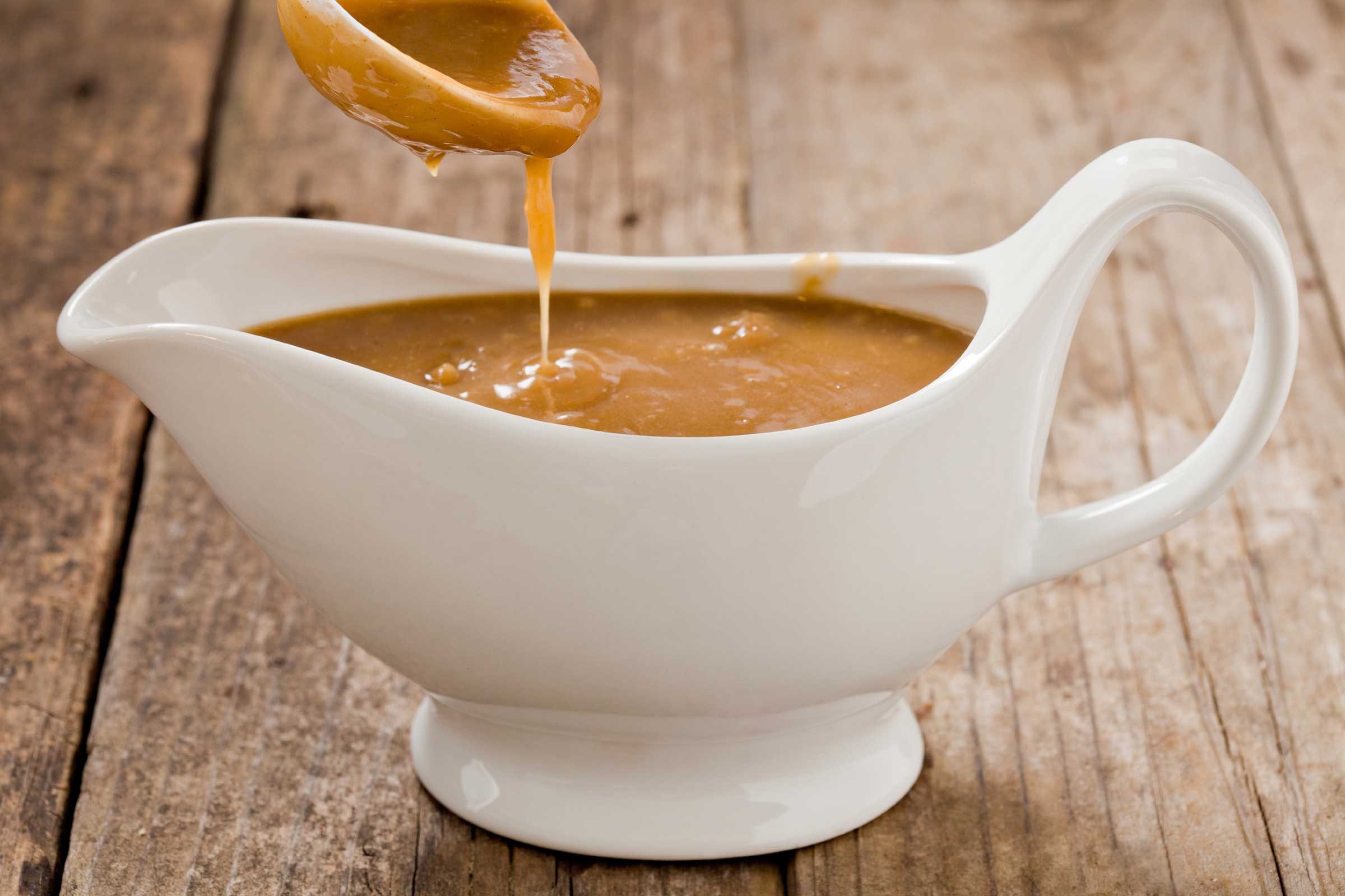
Gravy
The pros: You might think of gravy as sliding into the not-so-healthy category, but in moderation (1-2 tablespoons), gravy adds holiday flavor to Thanksgiving foods (for example: vegetables or skinless turkey breast).
The cons: It will add to your plate’s saturated fat count. If you make gravy from scratch, refrigerate before serving and skim off the fat that solidifies on top with a spoon. Reheat and serve. Try out this vegan mushroom gravy recipe for a healthy alternative.

Corn on the cob
The pros: It’s time to enjoy the “sweet” in sweet corn. An ear of corn has about the same number of calories as an apple (60). It also has about 2 grams of dietary fiber per ear and 2 grams of protein.
The cons: A pat of butter adds about 36 calories to your cob. You can enjoy the sweet natural corn flavor with or without the added saturated fat.
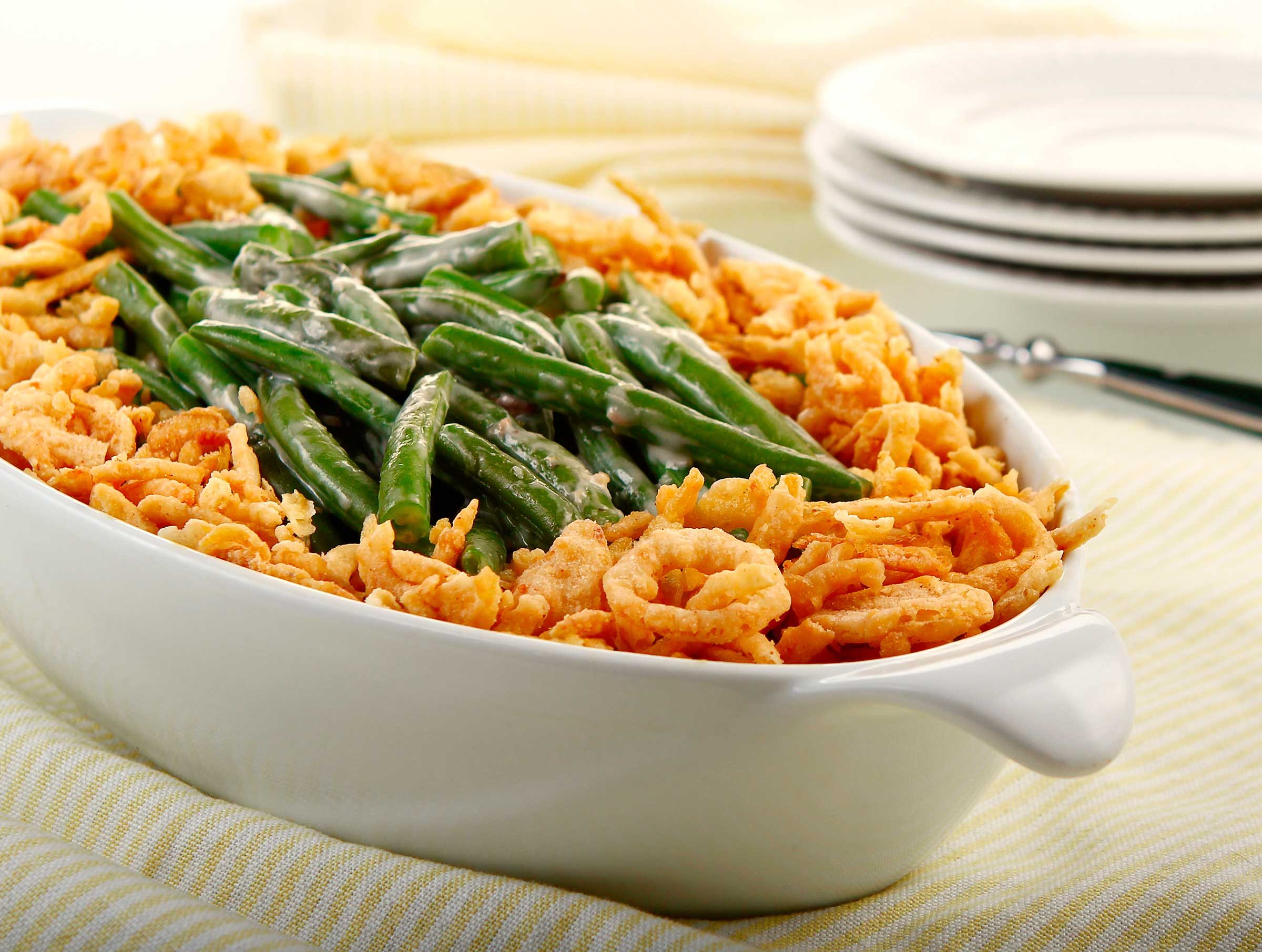
Green bean casserole
The pros: It’s not as high-calorie as other Thanksgiving foods. And, it does contain vegetables, so some fiber and vitamins. Many recipes use mushrooms in addition to green beans, so you get a healthy dose of veggies with your holiday tradition.
The cons: Most traditional green bean casserole recipes call for processed ingredients, such as canned soup and processed cheese, that are high in sodium and saturated fat. Best to stick with fresh, crisp green beans with some toasted almonds for a nutty flavor and healthy plant-based fats. You can skip the fried onion toppings if you are concerned about calories from fat.
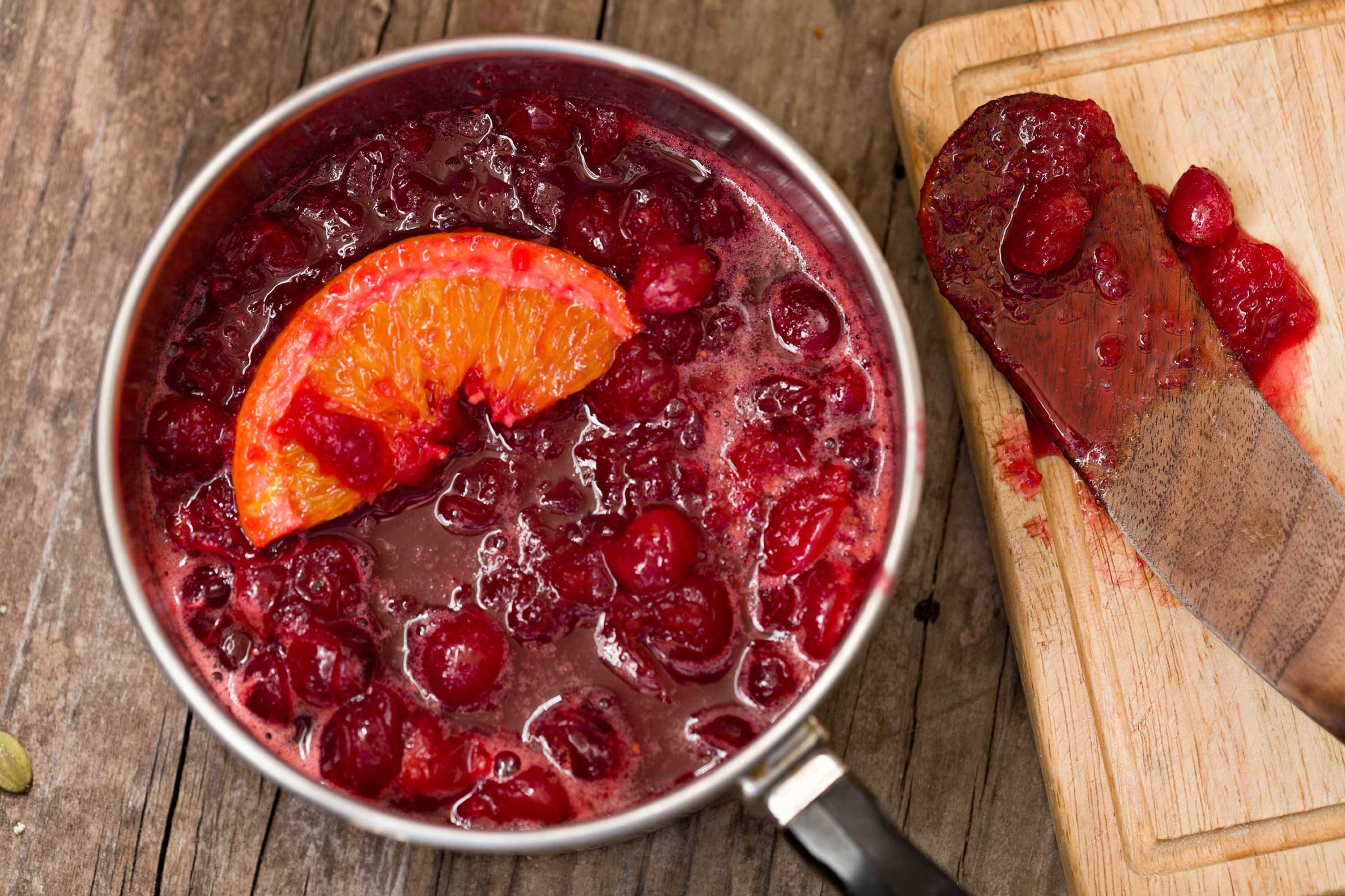
Sweetened cranberry sauce
The pros: Cranberry sauce generally has some awesome health benefits. Cranberries provide fiber and vitamin C and have long been studied as a way to prevent urinary tract infections, as this report explains in Advances in Nutrition.
The cons: It’s high in sugar and can deliver calories for little satiety. Here’s a better idea: make your own sauce from fresh cranberries and reduce the added sugar. You’ll still get the health benefits of the cranberries, but it’ll still feel like Thanksgiving.

White wine
The pros: Lower in calories than red wine or beer, white wine is a light drink choice for dinner.
The cons: You’ll have to keep a closer eye on how much you pour. A study from Iowa State University found that white wine drinkers pour 9.2 percent more into their glass than do red wine drinkers (possibly because clear wine makes it seem like there’s less in a glass). Hint: alternate an alcohol-containing drink with a glass of water to slow down your intake.

Red wine
The pros: Research published in Public Health Nutrition shows that drinking red wine did not increase abdominal fat in adults with type 2 diabetes. Others have studied resveratrol, a compound present in red wine and grapes that may help reduce fat weight gain, improve blood pressure, and improve glucose control in diabetes. Red wine also has slightly less sugar in a serving than white wine.
The cons: The calories can add up—125 per glass—along with the calories you’re already getting from your Thanksgiving foods.
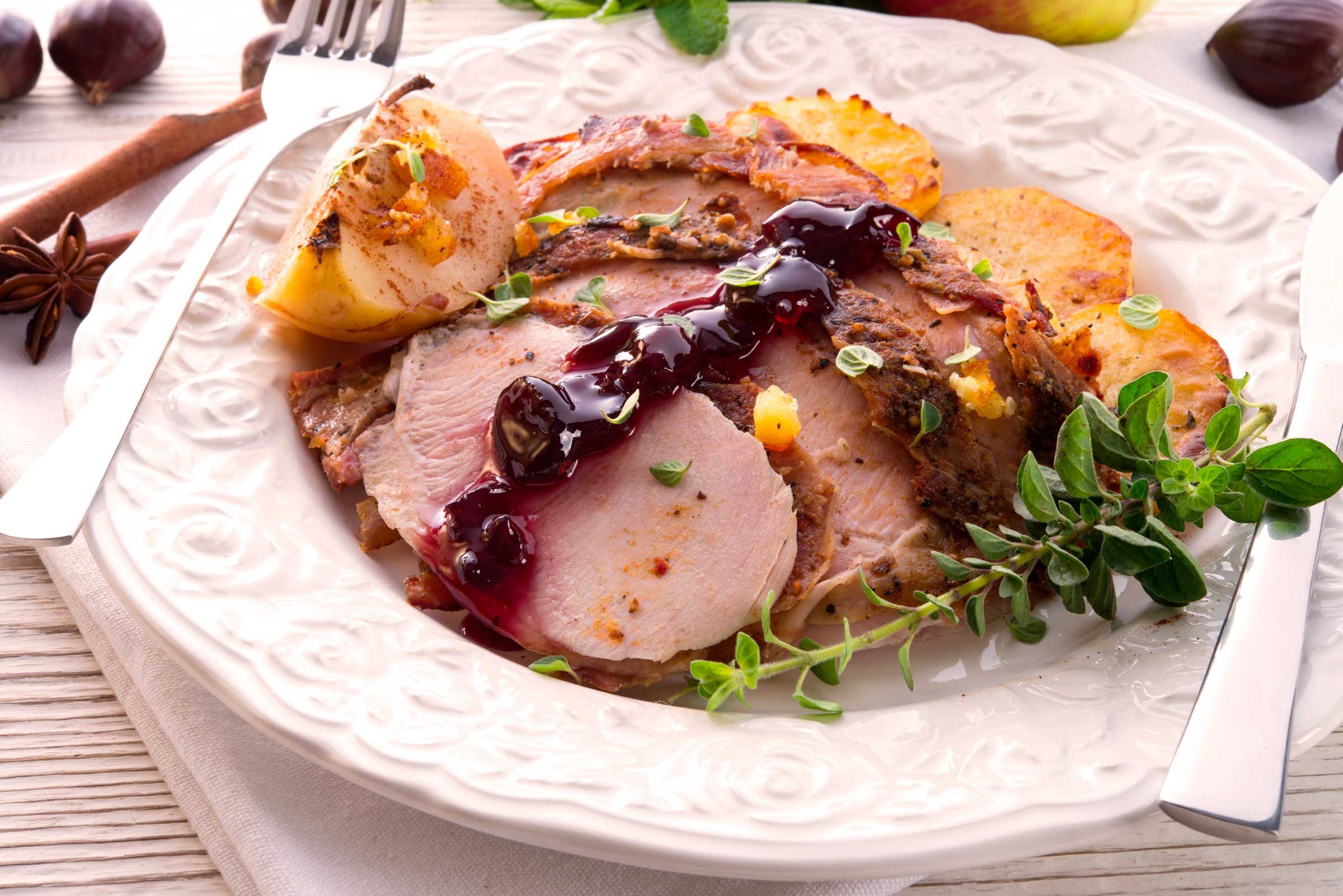
Turkey breast
The pros: White turkey meat (wings and breast) has fewer calories and less fat than dark meat (thighs). It packs about 22 grams of protein per 4-ounce serving. Turkey also provides iron, zinc, potassium and B vitamins.
The cons: Not a lot of cons to this lean protein. Enjoy your turkey on Turkey Day! But you might be asking yourself, does turkey really make you tired?
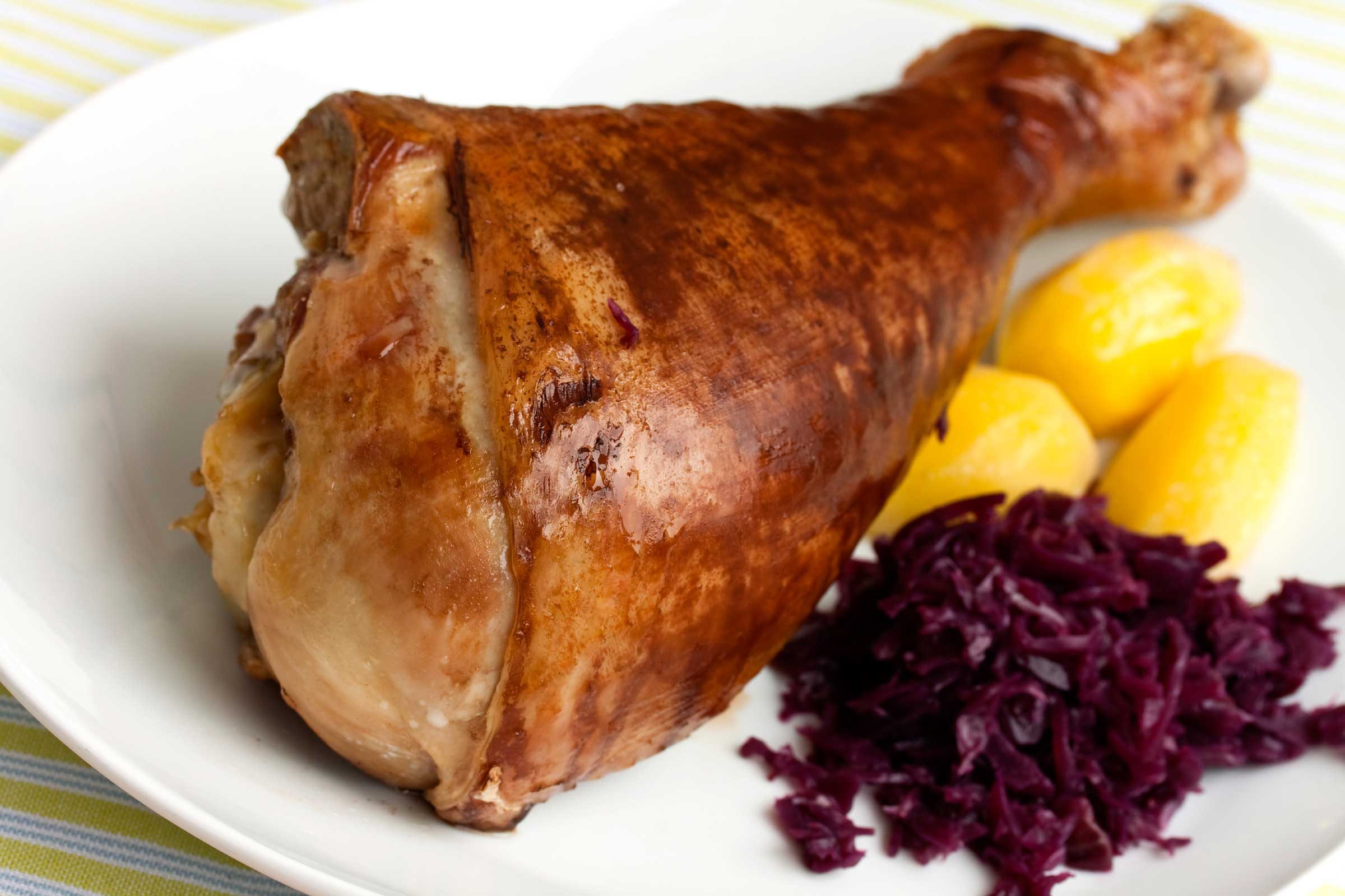
Dark turkey meat
The pros: Though higher in calories and fat than white meat, dark meat is still a good source of filling protein (about 32 g per 4-ounce serving). It also delivers more iron, zinc and B vitamins than white meat. And. according to experts at the Harvard T.H. Chan School of Public Health, even the fat in the skin is mostly unsaturated.
The cons: The skin does add calories on your plate. Look out for these 10 turkey myths that could ruin your Thanksgiving.
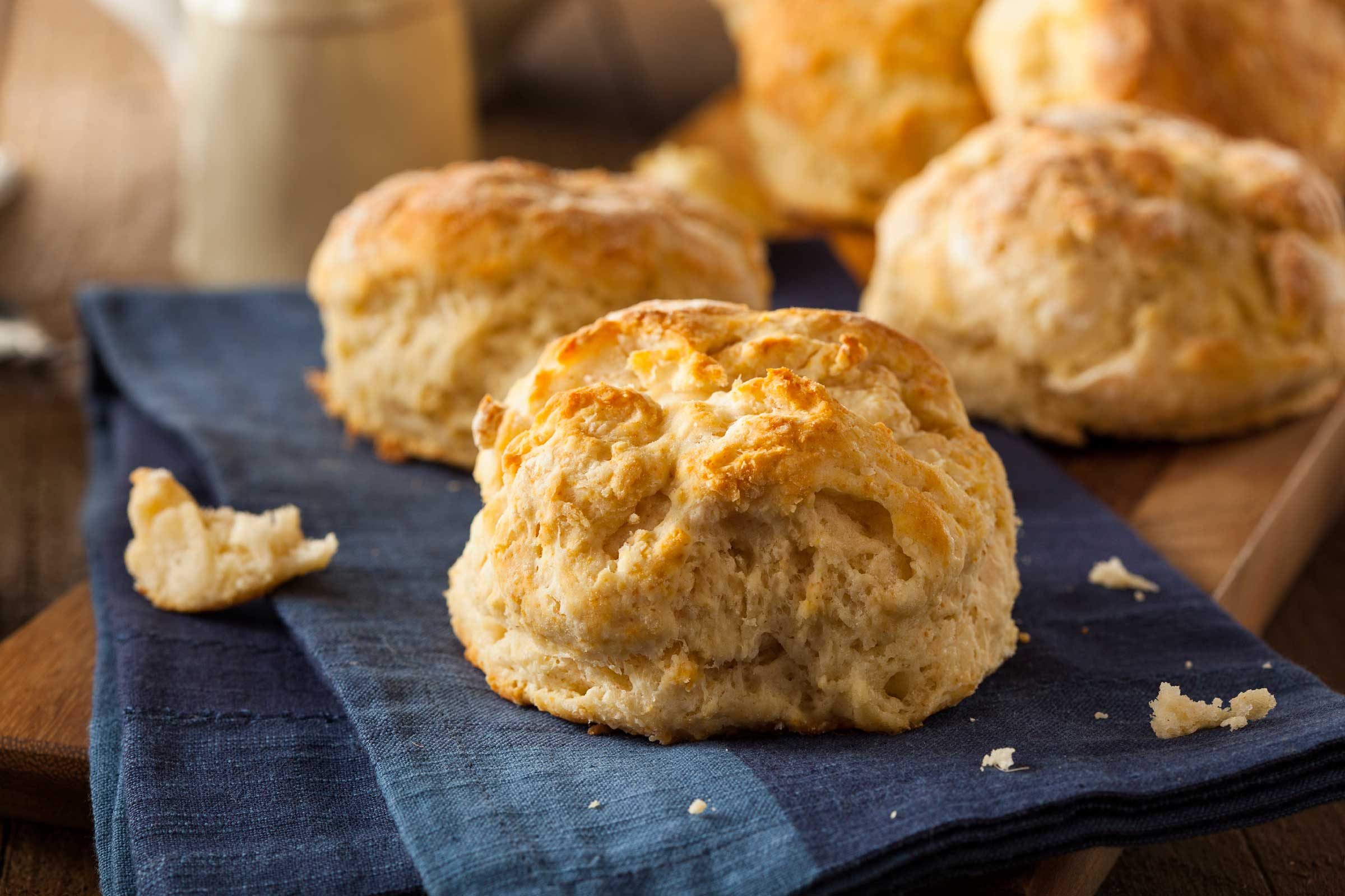
Biscuits
The pros: If you’re cooking biscuits, you have a bit more flexibility than with other dishes to make healthy tweaks. For example, instead of using sour cream, you can sub in Greek yogurt to lower the fat and increase the protein content.
The cons: Without any healthy tweaks, biscuits are essentially flour, baking powder, salt, butter, and milk or cream. That’s a large number of calories for little nutritional value and little satiety. And chances are, you’re topping that biscuit with butter, gravy, or jelly. Maybe choose between the mashed potatoes and the biscuits, rather than having both.
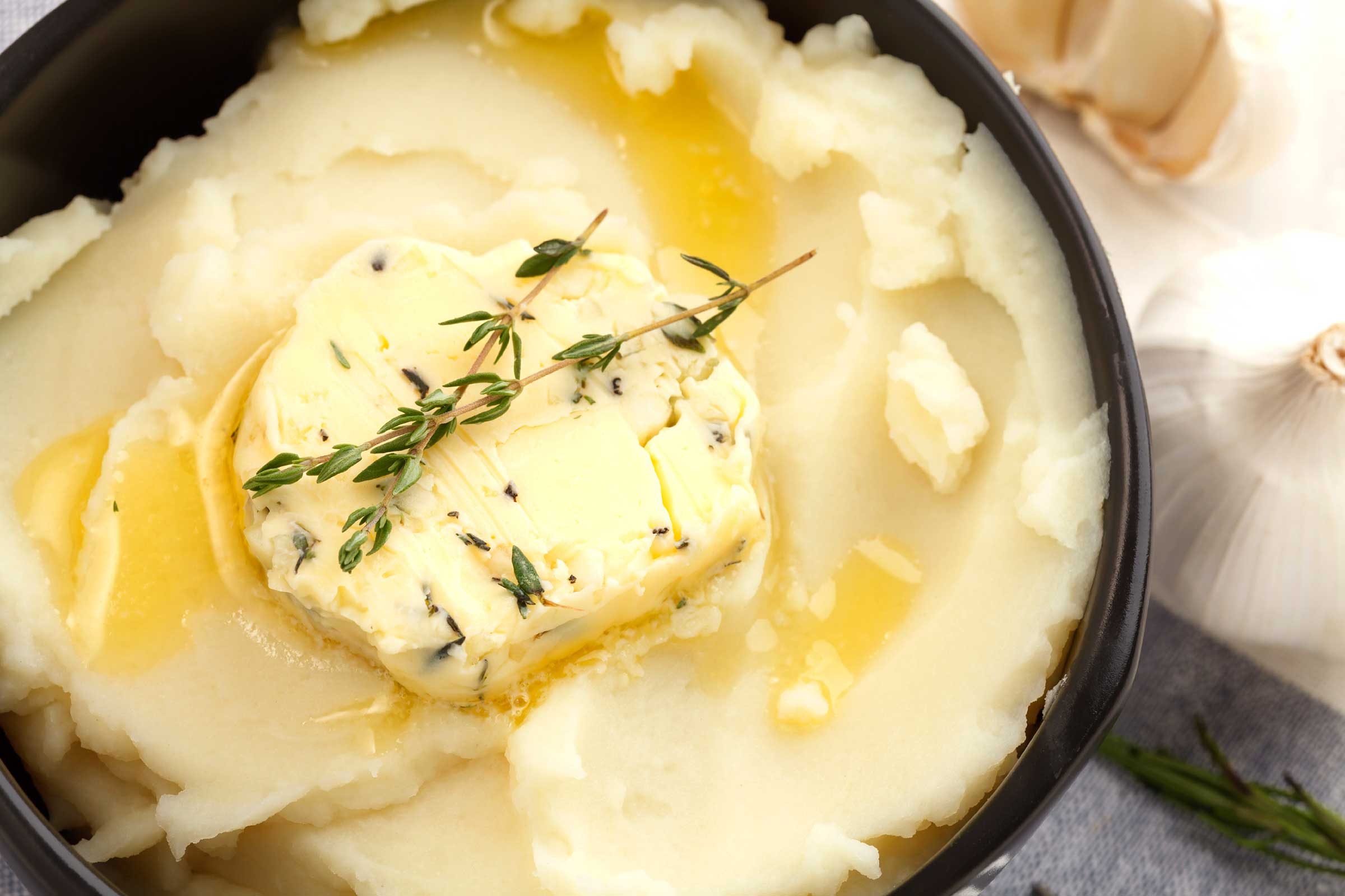
Mashed potatoes with whole milk and butter
The pros: A cup of mashed potatoes offers 3 g of healthy fiber. It also has a good amount of vitamin C, vitamin B, and minerals including potassium, magnesium, and iron.
The cons: As with many Thanksgiving side dishes, the main culprits in mashed potatoes are the add-ins (in this case, whole milk and butter). Some recipes even call for cream cheese or shredded cheese too. By preparing healthy mashed potatoes with just whole milk, and no other extras, you will eliminate significant amounts of fat and calories. Try out this vegan mashed potato recipe that’s a healthier alternative to this Thanksgiving classic.
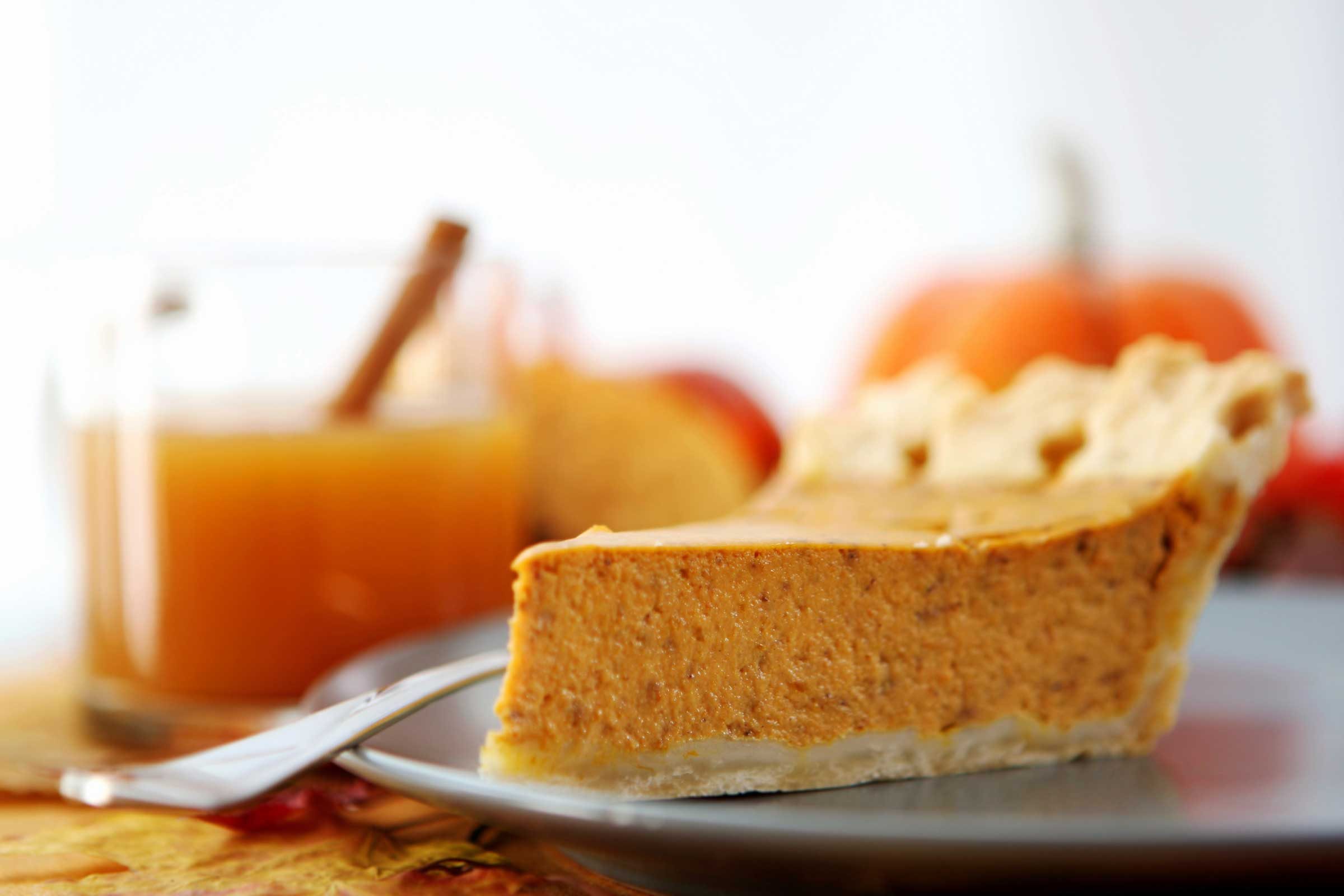
Pumpkin pie
The pros: Pumpkin itself is low in calories and packed with fiber, which means more satiety. And as if these healthy ways to eat pumpkin spice weren’t enough, it’s also a great source of vitamins, minerals, and beta-carotene. Pumpkin pie is still a healthier dessert than many other options on the menu.
The cons: Clearly, pumpkin pie has more ingredients than just healthy pumpkin. The crust’s butter and flour, along with cream and sugar required for the filling, make for a large dose of saturated fat and calories. So consider including an active family activity post-dinner and dessert.
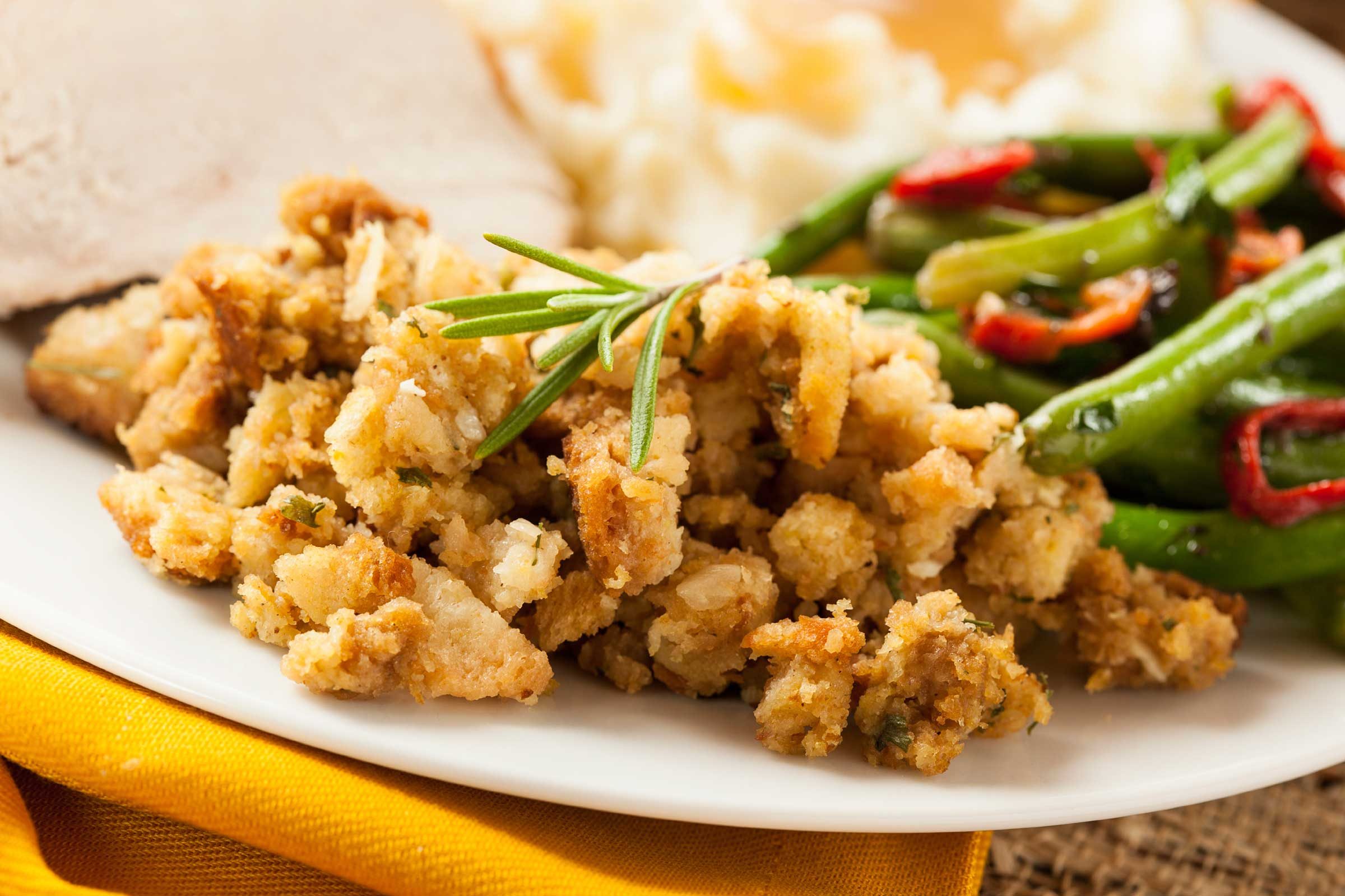
Stuffing: 390 calories, 24 g fat per cup
The pros: It is possible to lighten stuffing—cook it in a separate dish outside of the turkey and save yourself 70 calories per tablespoon. Stuff your stuffing with veggies (mushrooms, onions, bell peppers, water chestnuts) to increase the fiber without increasing the calories.
The cons: You’re essentially chowing down on bread, butter, and sometimes sausage. But, you probably only eat stuffing once a year. Don’t miss out on the health effects of overeating at Thanksgiving.
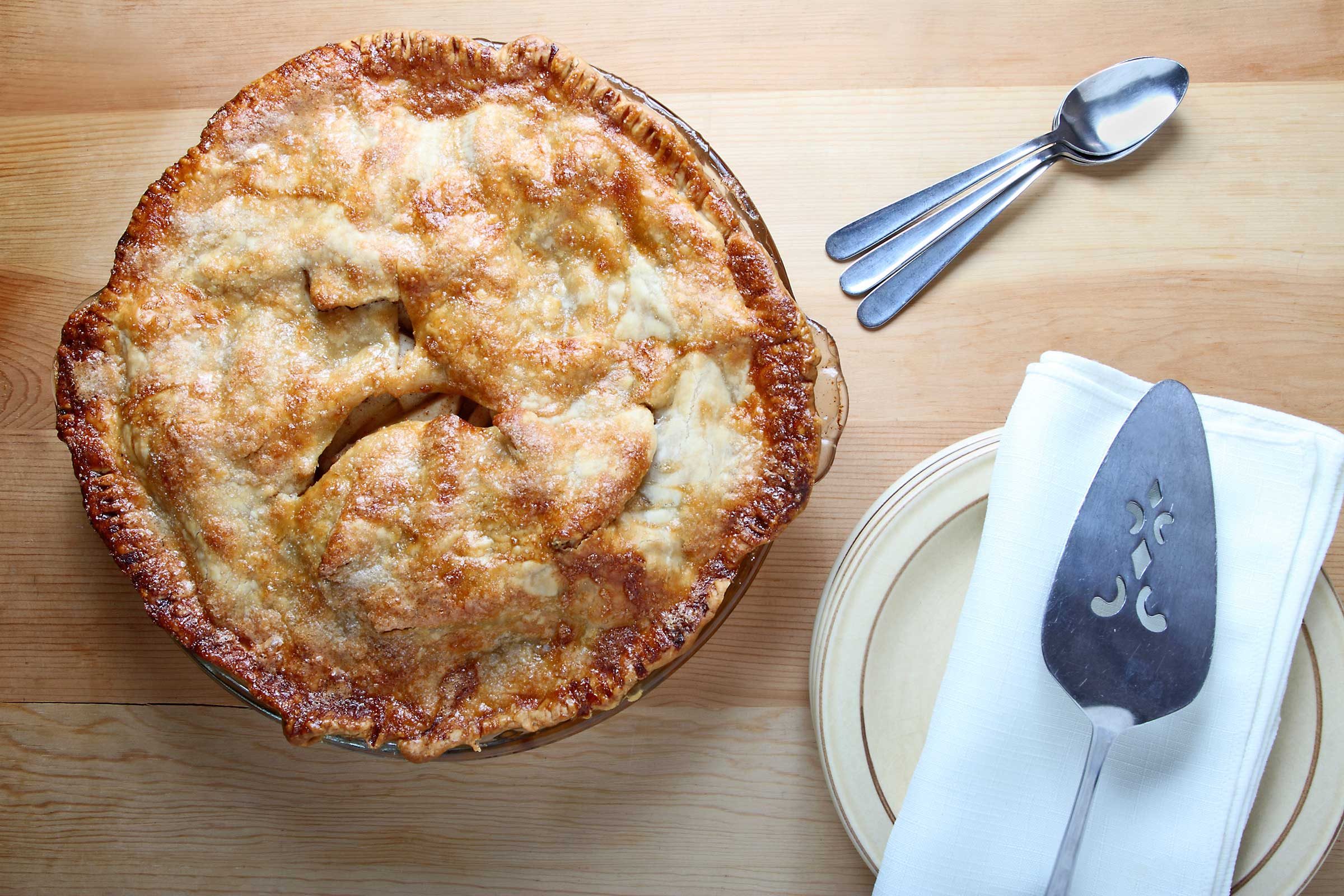
Apple pie
The pros: It’s a Thanksgiving favorite. Looking forward to an indulgence for dessert could encourage you to make healthier decisions (like swapping out spuds for spinach) throughout the rest of the meal.
The cons: With its buttery crust and sugary filling, one slice of apple pie has more calories (411) than a plate of turkey breast with gravy, buttery corn on the cob, and a glass of red wine. But don’t sweat it too much and remember that Thanksgiving—or any meal—is only as good as the people you eat it with.
